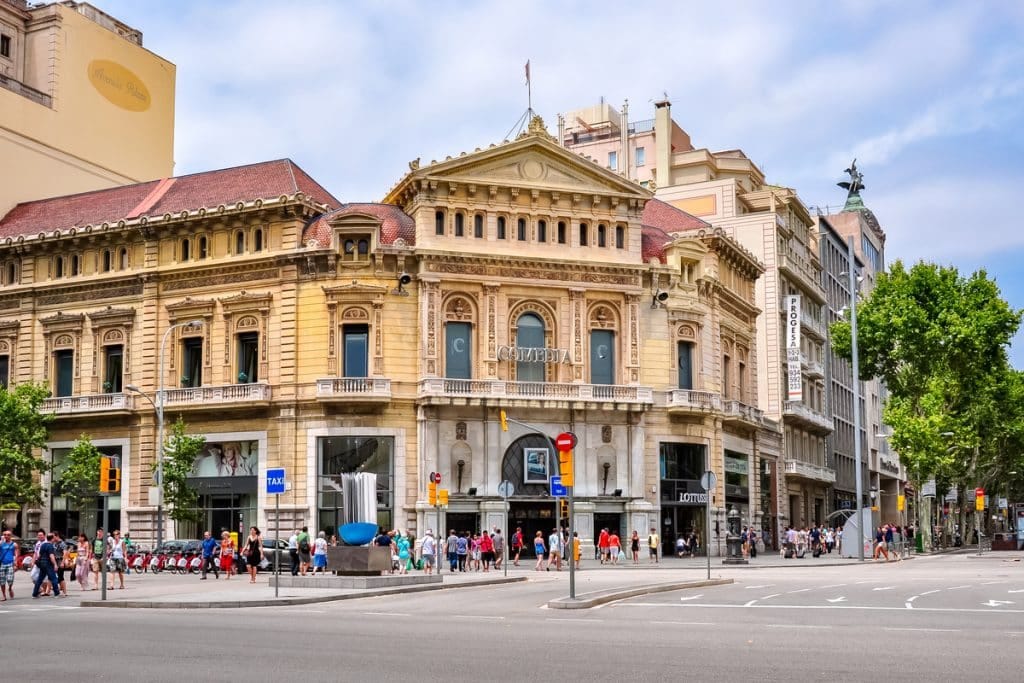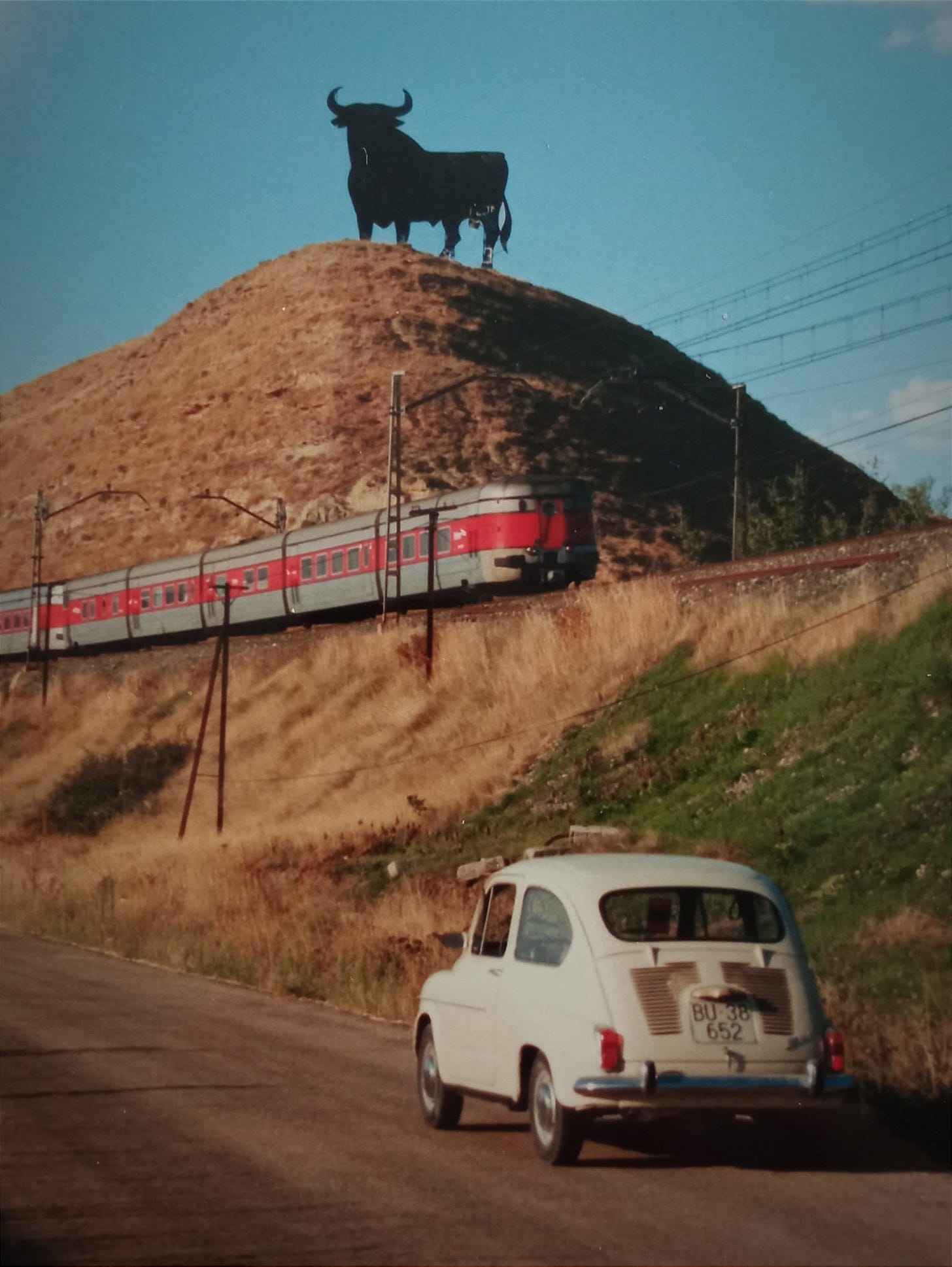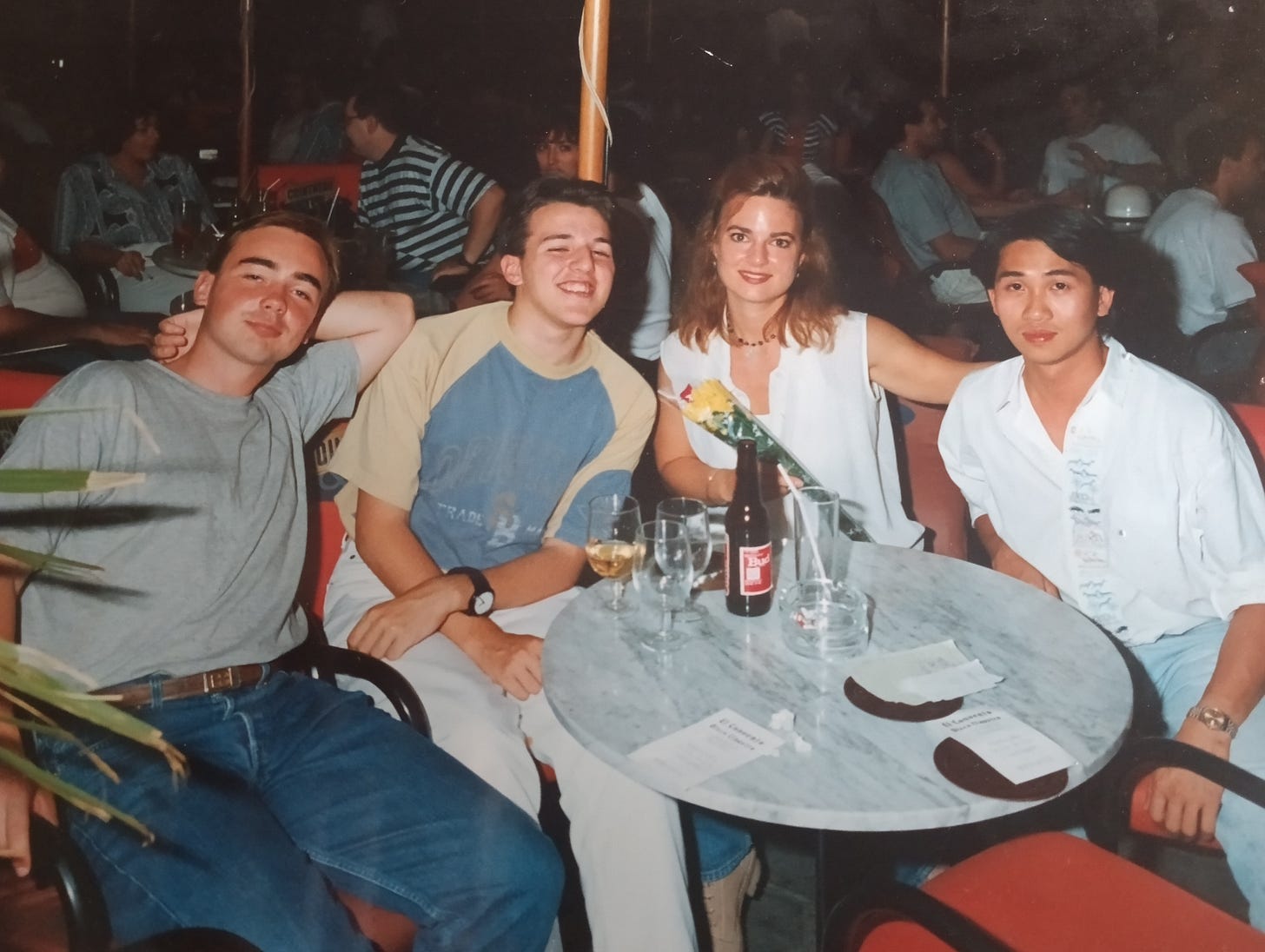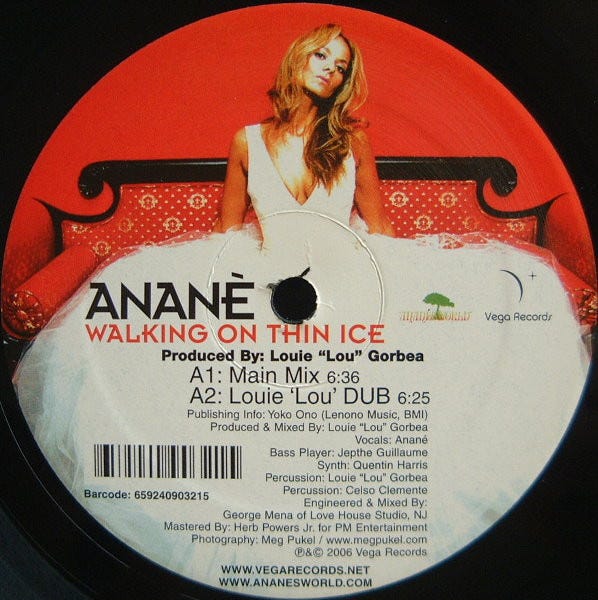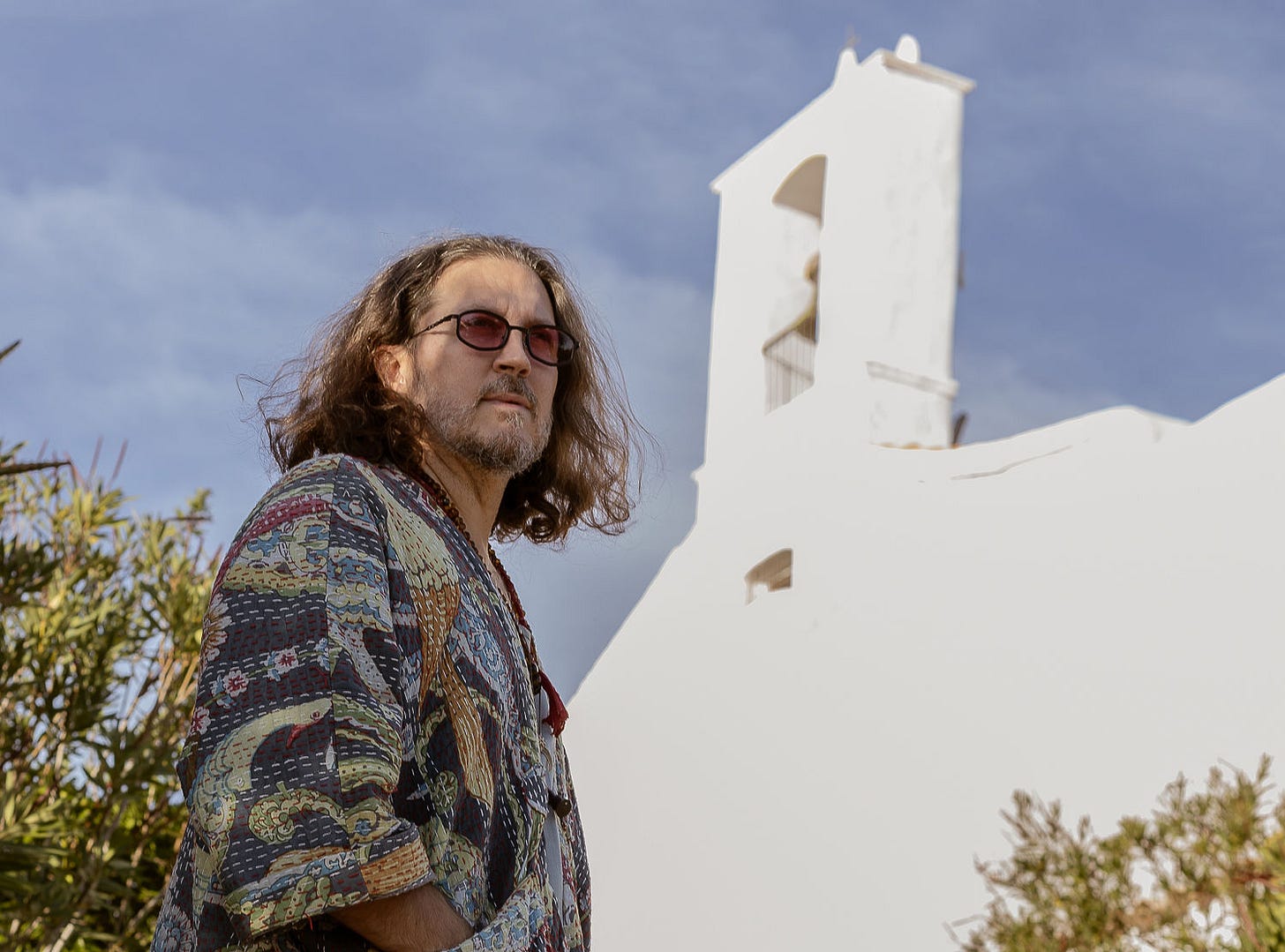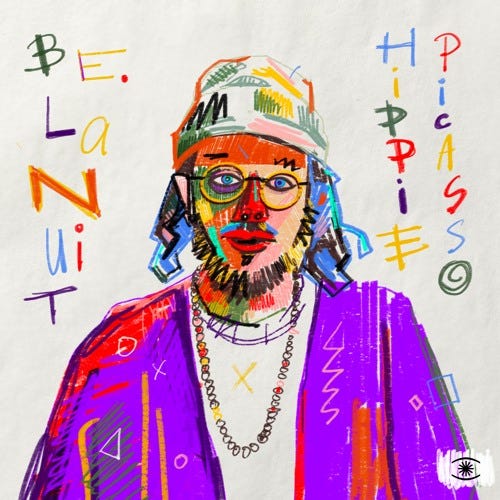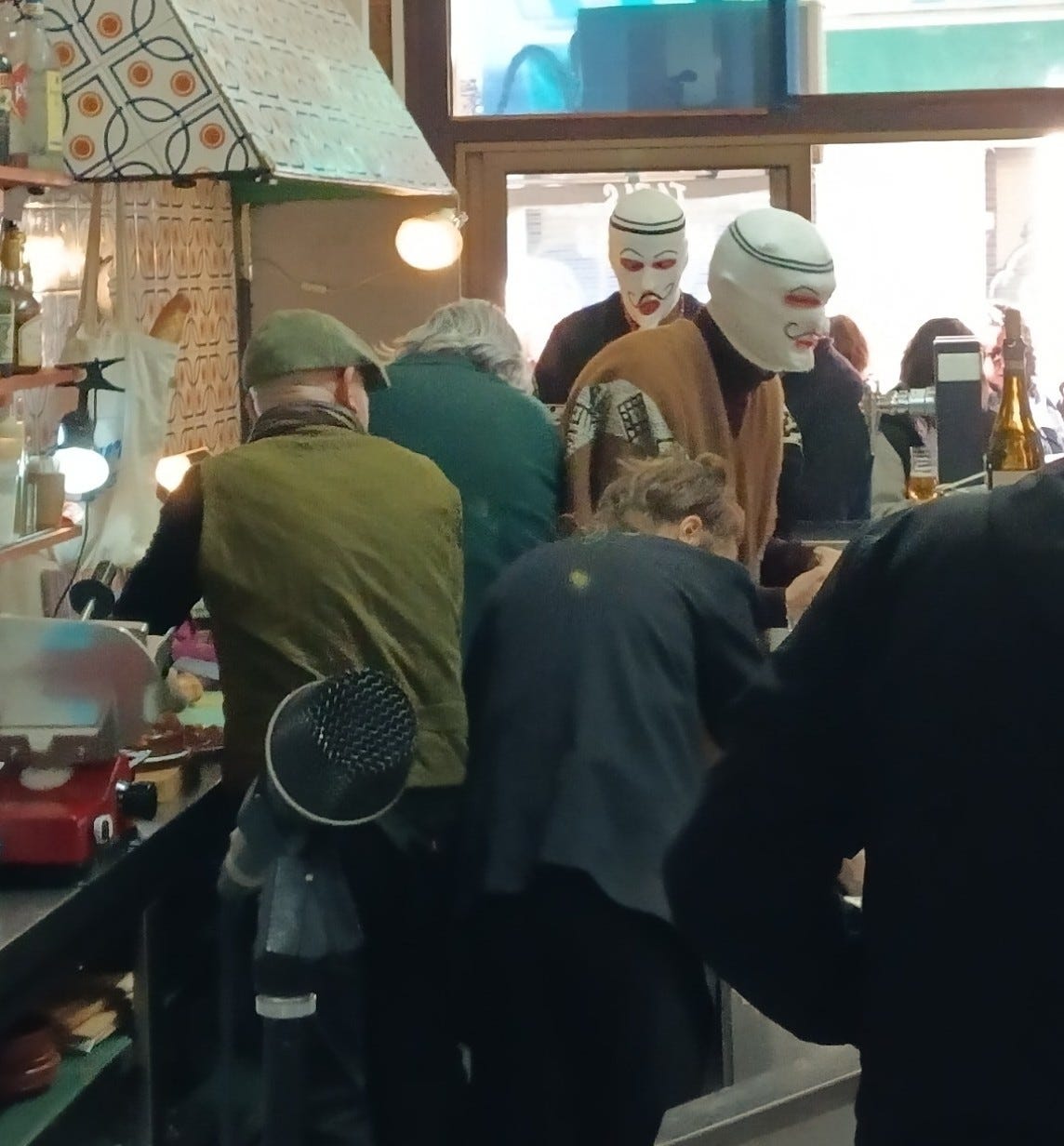In this week’s #ElPutoGuiri newsletter we examine nostalgia, walk on thin ice and hear from acclaimed “Hippie Picasso” producer Be.Lanuit. We also look ahead to the much awaited return of Messrs Johnston & Ivkovic.
Johnston & Ivkovic
Estoy a punto de cumplir 49 añitos pero todavía con incansables ganas de salir, disfrutar y escuchar buena música por la noche. Normalmente no comparto publicidad aquí pero es una excepción. El día 27 aterrizan Sean Johnston y Vladimir Ivkovic en la ciudad condal, posiblemente en el mismo avión que mi pareja. Son los invitados a Sala Apolo donde tienen previsto pinchar juntos toda la noche. Apenas salgo por allí hoy en día pero creo que será una cita imperdible. Conozco Ivkovic a través de sus míticas sesiones con Lena Willikens, mientras Johnston es un viejo conocido de Londres, el arquitecto de ALFOS con el alias Hardway Brothers y gran aficionado de toda la buena música. Nos vemos en la pista » Entradas Aquí
Mr Bingo’s Newsletter
I’m not sure I would ever have the guts to do what Mr Bingo did, but I certainly enjoyed his 55 Observations from taking a year off work (Thanks for the heads up, Reuben!) The appeal of slow travel, quiet spaces and interesting conversation with strangers has never been more seductive.
The Great Nostalgia Swindle
A famous cinema, the Comèdia, announced last week it is closing after more than 60 years in business. The news prompted audible groans on the socials from those convinced Barcelona is going to the dogs..
There is this noticeable disconnect now between the local and global perception of the city. Those Digital Nomads, pouring into Born and Poble Nou in their droves, are forever sharing photogenic beaches, food and ancient streets on glossy blogs and shiny, happy Instafeeds, whilst born and bred locals take an altogether more jaundiced view. It’s only recently I started to notice the growth of Catalan nostalgia - this recent thread of iconic old photos went viral - and I think it is mainly people in their 50s/60s recalling the optimism and naivety of the post-transition/pre-92 years.
I don’t think the Spanish heritage industry is quite as commodified as in the UK, which has turned nostalgia into a major industry, from stately homes to football memorials to Hacienda tribute orchestras. In an excellent essay before he died, the writer AA Gill referred sarcastically to nostalgia as Little England’s ‘Most Pernicious Drug’ - the primary but not exclusive preserve of that generation too young for military service but too old for The Sixties. Whereas in Catalonia I get the sense it is less of an indulgence, and more rooted in an economic backlash, particularly from those no longer able to afford to live in their own yard.
Of course, there is a reactionary element too and I wonder if those romantics sometimes forget the 80s poverty, heroin and quinqui gangs? Or the shanty towns swept aside in the Olympic gold rush - Can Valero, Somorrostro, Canons del Carmel.. Life was always tough for the poor. Two long deceased members of my family once lived in deepest Raval, running a fishmongers in the early years of the dictatorship, in that dense warren of streets around Carrer del Carme where they knew all the local thieves and whores, snitches, gossips and chancers.
The story went that everyone knew each other with unspoken “don’t shit on your own doorstep” codes of conduct in the barrio where people were reputedly invested in their street, didn’t let the rubbish pile up, graffiti go unchecked or narcos move in. But equally, in those days there was no spotlight on the battered wives or the cripples or those in the closet, outed and forced to confess their sins to cold Catholic priests. For better or worse, the old local communities are dead. Most of my current friendships were made online. This is the new reality.
I often get accused of living in this sealed petri dish labelled The Past but I see it more as a fascination with social history. Most of my own childhood memories visiting Spain were happy ones, family gatherings or going on that suspended propeller plane around Tibidabo that looked like a Meccano kit you could dismantle with a screwdriver. I am constantly reminded of the past in this city. The ghosts are everywhere. This summer for instance will mark 30 years since I met (the long vanished) Larry Chung, the focus of my (now deleted) book The Guiri (2013).
In an old blog I wrote:
At my Spanish class at the Escola Oficial d’Idiomes language school in Drassanes I found myself sat next to this ponytailed Canadian-Chinese entrepreneur who had made his way to Barcelona from Hong Kong via Calgary and Vancouver; a man with an infectious laugh and a master of cornball chat-up lines, Spanish malapropisms, and excitable gesticulations. Larry’s was a world of chicas go go, dive bars and dangling neon, where the amoral remnants of the old regime still held court. Places like Kentucky, Panams, Bagdad and other filth units around the old town. Indeed, for many years Bagdad was notorious for a live stage act involving a woman and a donkey (information I gleaned from Robert Elms in his brilliant book Spain: A Portrait After the General)
Whilst in my own way also a redblooded guiri, I was more drawn to places like L’Ovella Negra, Port Olimpic and Plaça Reial which appeared to offer more conventional possibilities and richer rewards. Dressed in cheap tees or flowing polyester shirts and white jeans, carrying a lighter around despite not smoking, and perfecting the art of speaking with a cig in your mouth, there were no depths of cringe to which some would not succumb in the pursuit of free-spirited carnal knowledge.
Beyond a small pool of teachers and students, the Barcelona of the early 90s was a lot less cosmopolitan than now. There were no meet-up apps or selfies by Canaletes or remote social managers huddled over laptops in Sandwichez. There would be an ad on a tree or in a bookshop for some informal language exchange - an intercambio - at La Raspa on Carrer Provença in deepest Eixample where randy teachers and Czechoslovakian students and curious locals assembled each Thursday. La Raspa had a quirky sister bar around the corner called La Fira which featured vintage 1920s fairground funny mirrors, swings and carousels, and most evenings would end or - in some instances - begin there. It still exists (albeit with much of the charm shunted to the side).
That social circle attracted a few enterprising opportunists too such as brylcreemed English geezer 'Gary' who advertised his own intercambios on lamp posts, where he charged people 1000 pesetas to sit at his table at a public bar. I doubt any of them would remember me now. They clocked me straight away, a drunken oaf barely out of college, playing court jester to the adults.
It’s never wise to rewind the clock but I do still miss Larry, the ultimate pájaro de noche. He abruptly disappeared in November 1995 in strange circumstances and was never seen again. Don’t ever bother googling Larry Chung or you’ll be scrolling all year.
Thirty years on, the rules of engagement have changed and nobody I know in Barcelona now hops from bar to bar piled into the back of a Fiat Panda, and you’ll struggle now to find any Fiat Pandas nonchalantly double parked on street corners. In other ways too it feels like another era. Much of the overt sleaze has migrated online. The Gin Scotch Club strip bar by me closed during lockdown and all that remains is a corrugated shutter. The fug of cigarette smoke that once defined nights out has all but vanished. The pursuit of cool and changing generational codes of conduct have all but eliminated the cheesy discourse of old, whilst intercambios are now dry digital networking events.
I think when my girlfriend K and I first moved to BCN we were conscious that it would be very different to the L’Ovella Negra related horseplay I described above. I’ve probably learnt more about real life, food, politics, relationships in the last 8 years than in the previous 41. My friend Ana made a very good point a while back “You stop being a guiri when you stop thinking like a guiri” and I guess it applies to age too. I think you reach a point where you realise that all the good stuff is word of mouth and on the periphery of everything, a golden rule forever but more so now than ever. Central Barcelona may be selling its soul to become a tacky theme park but you don’t have to go along for the ride.
El Maxi #20: Anané - Walking on Thin Ice (2006)
Crec que tothom hauria de coneixer la versió original de Yoko Ono, potser l’última obra a l’estudi amb el seu marit, unes hores abans del seu assassinat. Va ser una tragèdia en tots els sentits, i just quan tornava a aixecar-se artísticament. No sé si John Lennon - autoexiliat de la música a partir de 1975 - era massa conscient del nou moviment art rock, pero si no hagués estat per la seva mort, hauria estat impensable una col·laboració amb Talking Heads o Roxy Music en 1981? O potser un disc a Island Records? No ho sabrem mai.
Per la seva banda, Walking on Thin Ice s’ha convertit en un clàssic de new wave disco, un gran èxit a les pistes més avantguardistes al llarg de gairebé 45 anys. Hi ha versións de DJ Hell del segell International Deejay Gigolos i també dels Murk, Peter Rauhofer, Danny Tenaglia i els Pet Shop Boys. I va servir per rehabilitar la imatge pública de Yoko com artista, fora de l’ombra.
Aquesta versió de Anané potser no ha gaudit de la mateixa fama que els altres, però té el seu propi caràcter i per tant cal posar-se el disc i donar-li l'atenció que es mereix. Ella va néixer al Cap Verd, filla de portuguesos, però la seva família es va traslladar a Nova York on tots treballaven moltes hores per complir les seves ambicions. Es va casar ella amb Louie Vega (Masters at Work) i a poc a poc es va establir com dj i cantant. Va actuar al Superbowl, al Cirque de Soleil i davant del President Obama. És ben coneguda a l’Eivissa, sobretot per la seves residències al Blue Marlin.
No soc el màxim fan de MAW la veritat, pero m’agradan algunes cosetes de Vega. El seu remix de Walking on Thin Ice (Vega Records) es fantàstic, un exemple del deep house més profund amb una percussió molt bonica. Conta a més amb l’ajuda de Kenny Dope en la programació de batería i el gran Quentin Harris al sintetitzador. I per tant, música de primera categoria.
In Conversation With… Be.Lanuit
Be.Lanuit es un conocido productor ilustre y dj de renombre. Ha creado música para el sello Sonar Kollektiv, Sol Selectas y Afroterraneo (Kiko Navarro) entre otros, ha pinchado por medio mundo durante muchos años, y se apasiona tanto por el buen house que los corrientes más ‘downtempo’. En 2023 publicó el album Hippie Picasso en el sello danés Music For Dreams y ha colaborado además con el colectivo Homies en unas fiestas de leyenda. Hoy tenemos el enorme placer de hablar con el, un exclusivo para El Puto Guiri.
El Puto Guiri: Hola Be.Lanuit desde Barcelona, pues muchísimas gracias por acompañarnos hoy.
Be.Lanuit: Gracias a ti por interesarte y compartir un poco sobre mi al resto del mundo.
EPG: Quería empezar al principio. ¿Eres malagueño de origen no? Me imagino que el título del álbum debe tener algo que ver con los raíces de Picasso en Málaga - o estoy mal informado?
B: En realidad soy manchego, de la tierra de Don Quijote pero me marché de allí hace mucho tiempo. Lo del título del álbum viene porque siempre me ha parecido muy interesante la vida del artista Pablo Picasso y por otro lado el movimiento hippie en Ibiza en los 60/70. He liado mucho sobre ambos y fue una paja mental la de imaginarle cómo sería un Pablo Picasso viviendo en Ibiza en ese momento y con ese estilo de vida de los hippies.
EPG: Cuéntanos un poco qué tal fue la escena de música allí en los 80?
B: Bueno, te hablaré de mi tierra manchega, la ciudad donde nací y donde comencé mi carrera de dj en el año 1987. La música que sonaba en esta zona era muy de radio fórmula aunque en el club donde yo comencé a pinchar se ponía bastante italo disco y música comercial. Yo arriesgaba comprando dentro de lo que llegaba a Albacete cosas más electrónicas dentro del sonido más industrial, New Wave y post punk que venía del Reino Unido, Alemania, Austria y Bélgica (Liaisons Dangereuses, Front 242, Renegade Soundwave, New Order, Yello, Nitzer Ebb, T.V.O.D. etc) todo ello inspirado en lo que se llamaba “La Ruta Del Bakalao” proveniente de Valencia dada su cercanía. En el 88 descubrí el house y me flipé con esta música. Esto fue decisivo ya que en Albacete no cuajó y no tuve más remedio que marcharme a buscar lugares donde encajase mi nuevo sonido. Ahí es cuando llego a Benidorm (en aquella época un lugar importante en esta escena) e Ibiza.
EPG: Salió un disco interesantísimo hace dos años, el recopi “La Ola Interior Spanish Ambient & Acid Exoticism 1983-1999”. ¿Crees que todavía hay mucha música de aquella época olvidada?
B: No conocía esta compilación pero me parece muy interesante todo el contenido. Gracias por descubrírmelo! La verdad que en España hay mucho que sacar a la luz. Mucho talento que bien por falta de un buen marketing o porque no hay suficientes medios de comunicación que lo valoren y avalen, tal vez queda inmerso en el océano inmenso de la música.
EPG: Hay tanta buena música española ahora y muy variada de muchos sitios, con gente tan diversa como Pau Roca, Two Mamarrachos, Mecánica Clásica, Pepe Link + sellos como Balearic Ensemble (BCN) o Rare Wiri (Madrid)… En tu caso, como y cuando empezó la pasión por la música? ¿Hubo una canción o alguién que influyó todo o fue una entrada poco a poco?
B: A mi me influyó tener a un tío mío y unos amigos mayores que yo también de Albacete viviendo y pinchando en Ibiza en la primera década de los 80. Me mandaban casettes de sus sesiones en el Extasis, Ángels. Mi tío me las mandaba de su amigo José Padilla allá por el 88/89 y de Dj Pippi. Pero desde luego el tema que me voló la cabeza en el 88 fue Turntable Orchestra “Gonna Miss Me”.
EPG: Estuviste en Madrid un rato también pero ahora estás más vinculado con Ibiza, es correcto? ¿Como llegaste a la isla y por qué?
B: Después de estar un tiempo viviendo en Ibiza a finales de la década de los 90 y principios de los 2000 pinchando en algunos lugares como El Grial, mi cuerpo me pedía salir a conocer más cosas y pensé en irme a Barcelona por la influencia musical que me llegaba y por tener mar como Ibiza. El azar me llevó a Madrid, cosa que jamás hubiese pensado y allí he vivido 20 años. Aún sigo ligado a esta ciudad y le encanta. Después debido a un trabajo que desarrollaba como curator musical en una compañía de hoteles me trasladaron a Ibiza en el 2018 y después con la pandemia cuando acabó todo con esta compañía decidí mudarme definitivamente a la isla. Es algo que de todos modos yo quería que pasara cuando decidí marcharme de la isla en el 2002. Me dije a mi mismo que volvería y así ha sido.
EPG: Y como ves esta soleada escena chillout? Tengo la impresión que es muy cosa de Ibiza y no tanto por la península. O igual estoy equivocado.. al menos en Barcelona sigue siendo muy minoritaria de momento.
B: Yo creo que es una escena muy minoritaria en todas partes. Sobre todo en Ibiza que aunque no lo creas es donde menos se consume. Pero esa micro escena es lo que lo hace especial y le hace mantener una cierta calidad además de darle una credibilidad de cara al resto del mundo.
EPG: Me encanta el álbum. El favorito debe ser ‘Tren Destino a París’ pero también mola la pista principal con aquella guitarra preciosa de Melón Jiménez.
B: Son dos temas que me representan al 100%. La sonoridad cinemática me apasiona y el flamenco y la música clásica española está en mi corazón. De hecho estudio guitarra clásica. Melón es para mi el mejor guitarrista de flamenco de esta generación además de que hemos trabajado juntos en otras producciones y nos conocemos muy bien y Tupac Peralta con Emil de The Swan And The Lake supieron entender a la perfección mi composición de Tren Destino A Paris.
EPG: Adoro Ibiza aunque se detecta alguna evolución negativa con esta pesada cultura VIP. Es posible mantener este equilibrio coexistente entre las diferentes Ibizas o representa una seria amenaza al ecosistema social o medioambiental?
B: Ese fue otro de los motivos por el que decidí marcharme en el 2002 de la isla. Lo que veía ya no me gustaba pero ahora estoy reencontrándome con Ibiza y le estoy dando una oportunidad. Creo que hemos hecho las paces y con ello he podido darme cuenta de que si que se puede mantener un equilibrio con la Ibiza VIP de la que hablas. Las cosas son como son. La única opción es buscar tu espacio haciendo lo que crees y lo que amas y al final la isla te hace un huequito.
EPG: Fuera de la música también eres propietario de un negocio de ropa sostenible. Explícanos un poco sobre esto.
B: Pues la marca la cree en el momento de lockdown pandémico. No podíamos trabajar como djs y pensé en hacer algo mientras seguía produciendo música en el que ayudase a crear un mundo más sostenible. Hablé con una vieja amiga que es diseñadora y me gasté los ahorros que tenía para ponernos manos a la obra. A día de hoy esta marca forma parte del proyecto global artístico ya que está muy vinculado al tipo de música que hago y a la isla. De hecho todo el tejido y la producción que no es muy grande es made in Ibiza. Nada de cadenas de explotación en China ni India. Todo confeccionado por mi amiga con mi ayuda en Santa Gertrudis.
EPG: Pues aqui abacamos. ¿Qué esperas de 2024 y donde podremos escucharte?
B: Gracias de nuevo. Este 2024 tengo previsto sacar el nuevo álbum en Music For Dreams además de algunos singles sueltos. Me gustaría también poder llevar mi música al directo así que ese es uno de mis objetivos mas importantes. Espero poder conseguirlo. En el área de los dj sets sigo en La Torre Ibiza, The Standard, Laylah y Mambo. En Madrid pueden escucharle en el Berlín Club cada mes con la sesión mensual Absenta. Y por supuesto nuevos ítems de la marca de ropa con los clásicos kimonos que ya llevamos fabricando 3 años.
Hippie Picasso ya está en venta AQUÍ
Bar La Cañada
Bar La Cañada: “Un bar de siempre donde pasan cosas”




